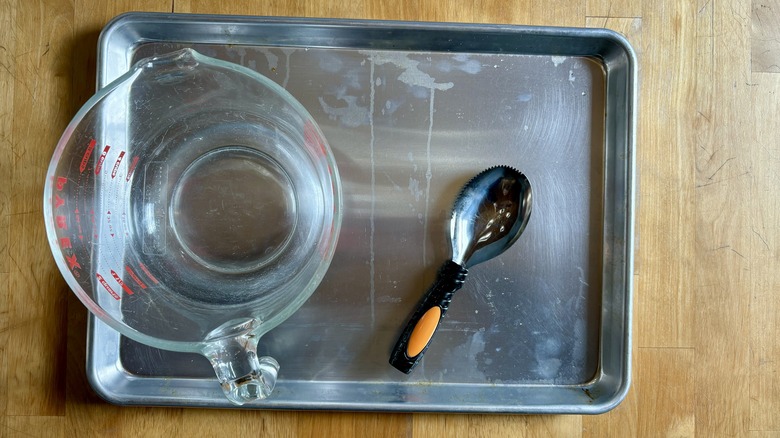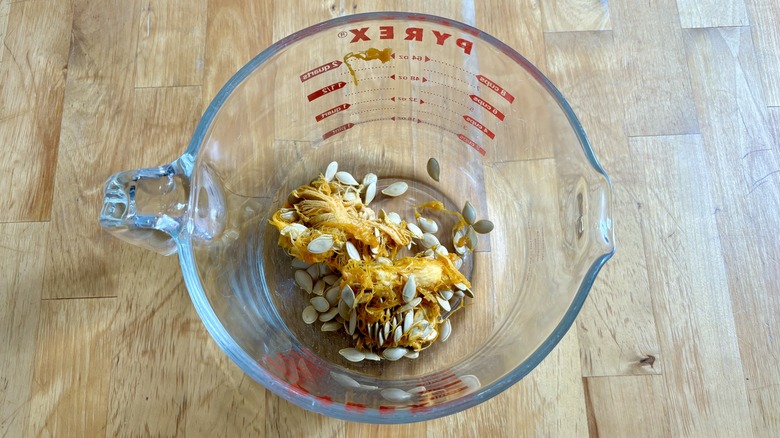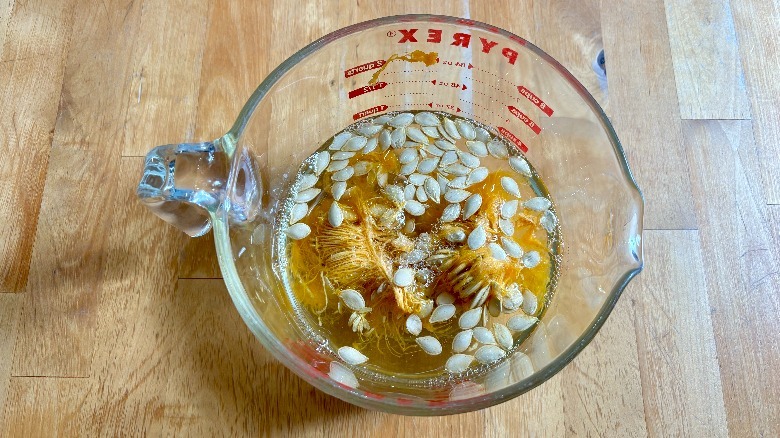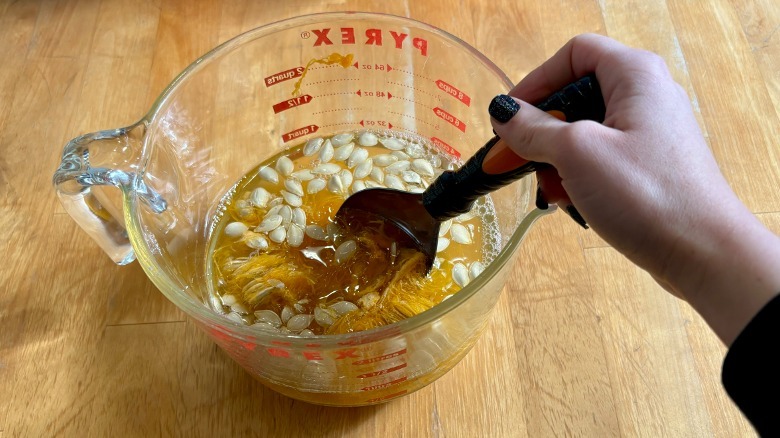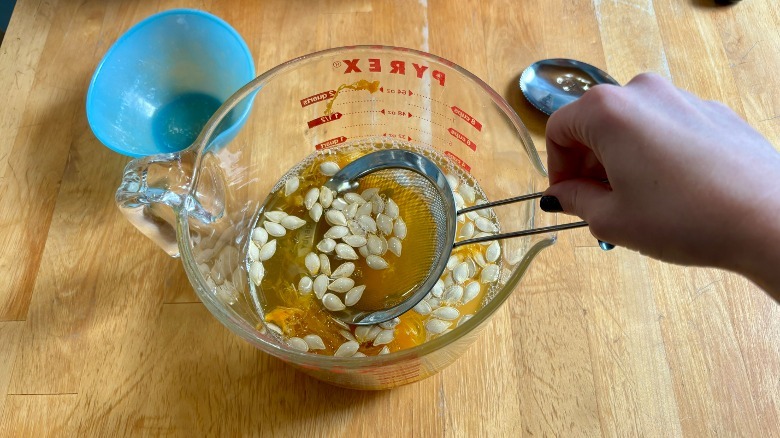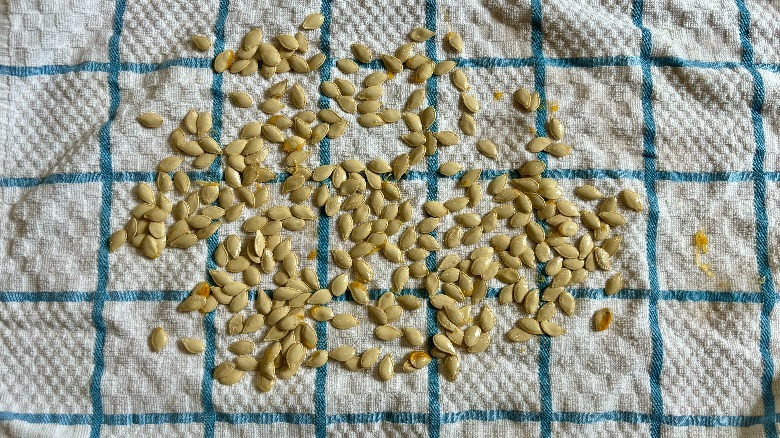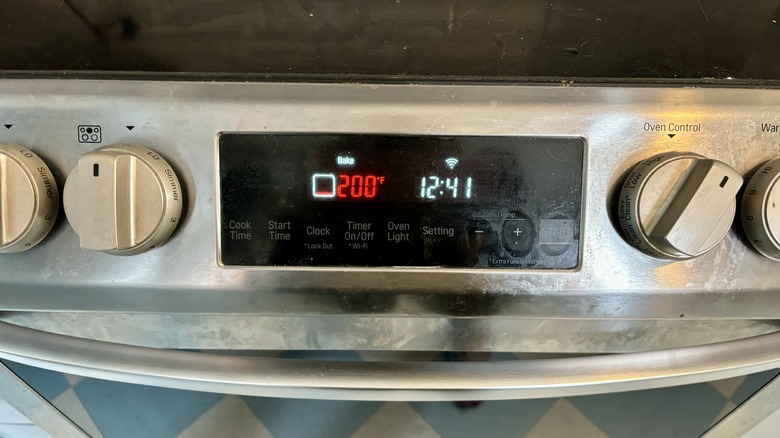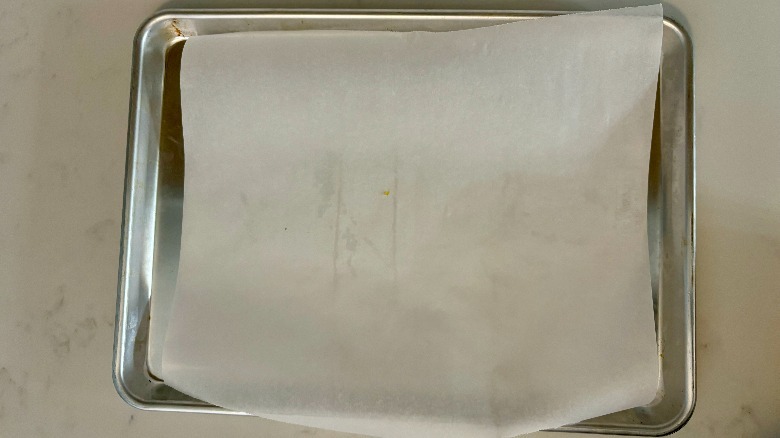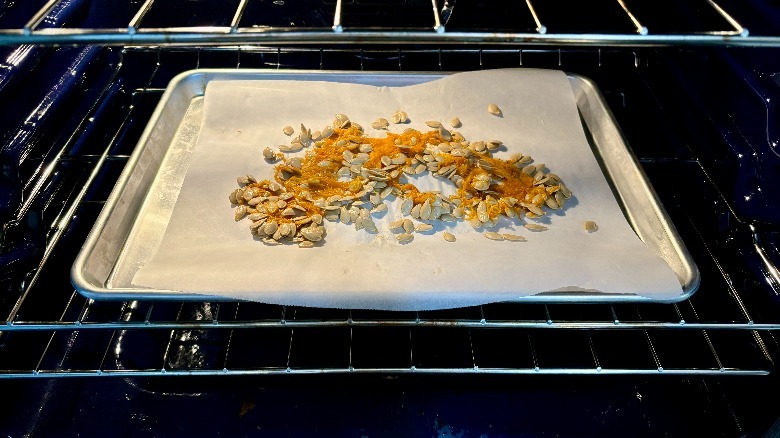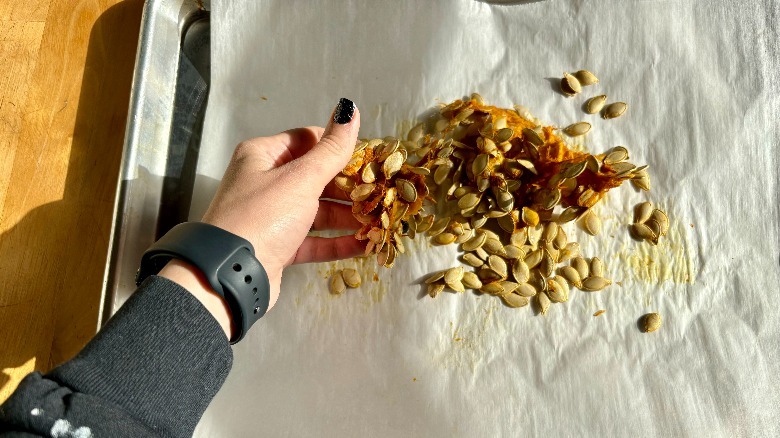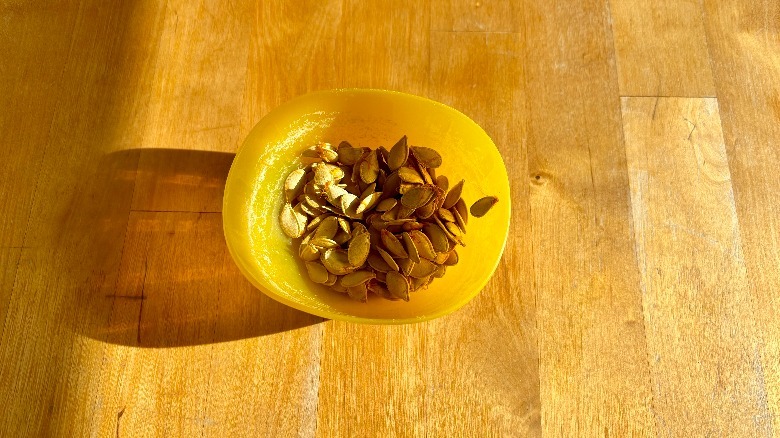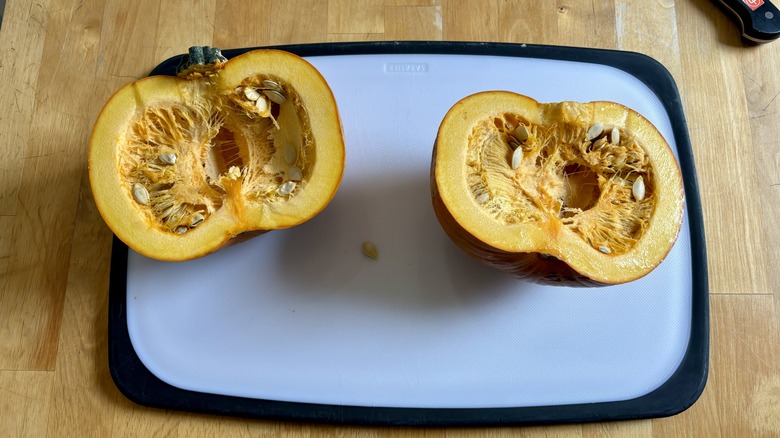How To Easily Separate Pumpkin Seeds From The Pulp
Pumpkin season is a glorious time of year. For several weeks in the fall these orange beauties can be found everywhere and in just about everything. But when your jack-o-lantern carving and pie prepping is finished, there's a good chance you've been saddled with extra seeds and messy pulp.
On their own, pumpkin seeds can be incredibly useful — you can roast and eat them, work them into recipes, or save them for planting. But all too often, the daunting task of separating the seeds from the slimy pulp leads us to either compost or simply trash them.
We're here to help. You no longer need to waste time laboriously picking your way through pumpkin guts. We have two foolproof ways to release the seeds from their slimy clutches. Both of these methods are exceedingly simple and require little to no cooking knowledge or experience beforehand. When it's all said and done, you'll be a pumpkin pro and never toss your leftover seeds again.
What tools you will need
Luckily, separating seeds from pumpkin pulp does not call for much equipment. What's even better is that it doesn't require any specialty tools outside of what most people already have in their kitchens.
The tools you need depend on which method you choose. For the water method, you will need a knife to cut open your pumpkin, a spoon to scoop out the pulp and seeds, two large bowls, water, and a towel. For the dry method, you will need a knife to cut open your pumpkin, a spoon to scoop out the pulp and seeds, a baking sheet, a small bowl, and some parchment paper if desired.
The water method
The water method is an easy and quick way to separate the seeds from the pumpkin. It's a great choice if you plan on using the seeds to plant in the future. First you need to scoop out your pumpkin, retrieving all the loose guts and seeds.
Once all the guts and seeds have been removed, place them in a bowl and add water. Fill the bowl high enough to cover all the pieces, but not so much that you might spill some over the edges.
Next, use your hand or a spoon to swish around the contents of the bowl. This will help remove the seeds from the pulpy bits. The separated seeds will float to the top.
From there, use a strainer (or your hand) to skim the now-separated seeds off the top. Repeat the previous step if you notice there are still pulp stuck to the seeds.
Once retrieved, place the separated seeds in a bowl and give them a final rinse. Drain the water and let the seeds dry in a single layer on a kitchen towel. (Paper towels work fine, too.)
The dry method
The dry method is our other go-to process for separating pumpkin seeds from pulp. It's a better approach if you plan to eat the seeds rather than plant them. To start, grab a large baking sheet and preheat your oven to 200 F. This will be warm enough to dehydrate the seeds, but not hot enough to roast them.
Optional: Cover your baking sheet with parchment paper. Doing so will make cleanup easier.
Place the already-scooped pulp and seeds on your baking sheet. Spread everything out evenly across the sheet, making sure to avoid thick piles or clumps of pulp.
Place the baking sheet in your preheated oven and set a timer for 15-20 minutes. The process can take more or less time depending on how much pulp there is, but this is generally a good range to start. The goal is to completely dry out the contents until brittle to the touch.
Once dried, remove the pulp and seeds from the oven. When everything is cool enough to handle, use your hands to scoop and crumple the seeds and pulp. This will release the seeds.
Finally, fully separate the seeds by picking away any remaining pulp. Place the seeds in a clean bowl until ready to use.
Recipes and uses for pumpkin seeds
There are many ways to enjoy pumpkin seeds. The easiest is simply eating them on their own — after you've roasted them to perfection at 300 degrees Fahrenheit in the oven, of course. You can also roast pumpkin seeds in an air fryer if you're short on time or working with a smaller batch. And since pumpkins are synonymous with autumn, why not season your seeds with an extra boost of fall spice?
Aside from roasting, pumpkin seeds also work as a toasty topping for butternut squash soup. It's even possible to turn your excess seeds into a decadent pumpkin seed butter. They might be more of a seasonal treat, but pumpkin seeds' culinary applications are endless.

